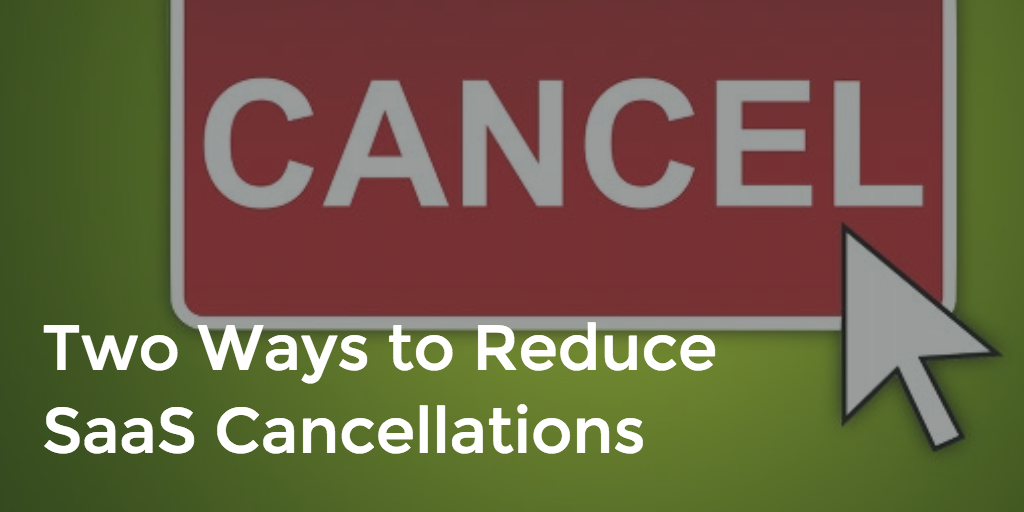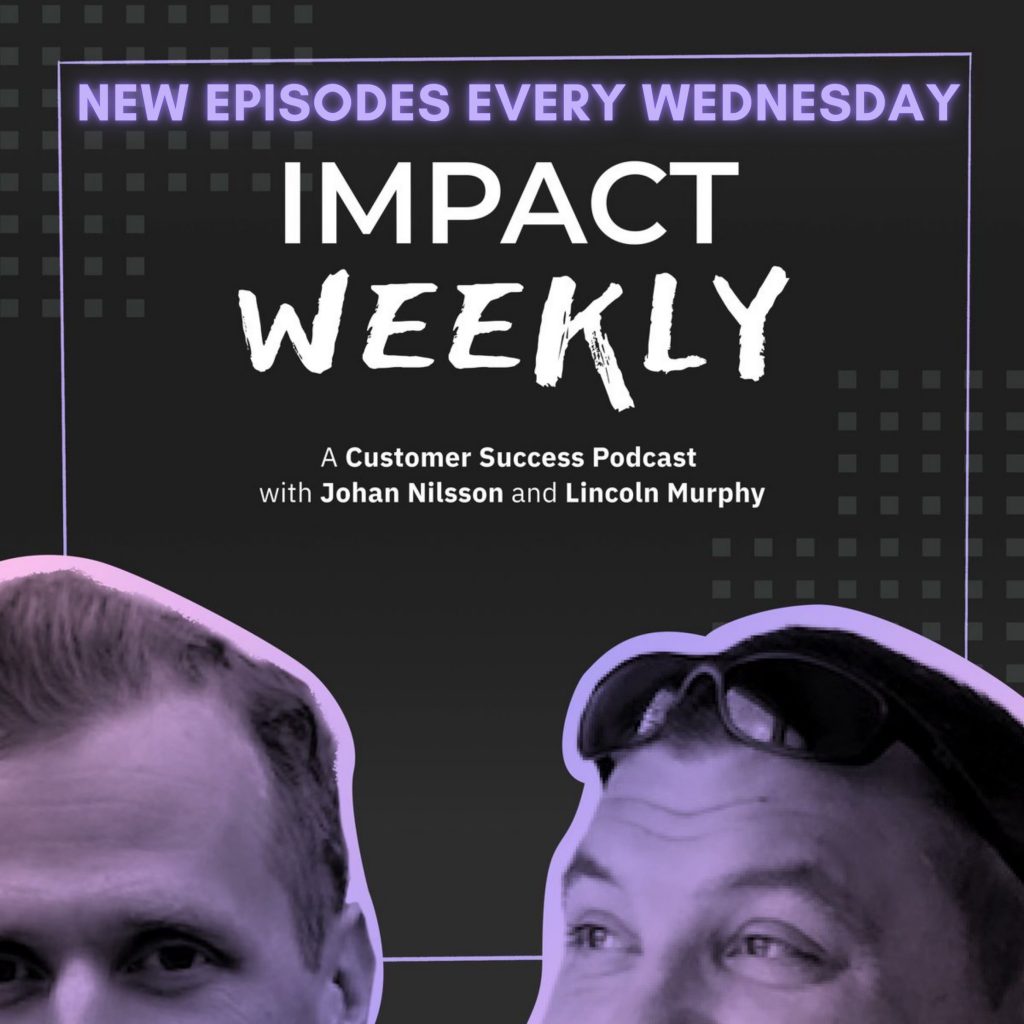 Fairy Tales have happy endings.
Fairy Tales have happy endings.
That’s why they’re so popular; even if they include scary moments with monsters and evil blended family members, everything is pulled together nicely at the end when the naive protagonist is magically okay.
In business, the same types of fairy tale exist, with one being that customers cancel their subscription or don’t renew their contract but somehow, magically, those customers are brought back from past the brink and, in the end, their cancellation was reversed, they’re happy, and maybe they even took an upsell on the way back in.
The reality is, that’s not generally how things work; and if you’ve heard about the opportunity in cancellations others may have experienced, I can guarantee their experience was unique and rare.
Regardless of your humility, transparency, and noble intentions, customers that cancel – and didn’t get acquired or go out of business; the only slightly acceptable reasons for churn – do so because they did not achieve their Desired Outcome through their interactions with your company.
Customers achieving their Desired Outcome through their interactions with your company tend to not churn; that’s why focusing on Customer Success is so important.
Ultimately, this means swooping in after your former customer made a decision to stop doing business with you, – because you didn’t enable them to achieve their Desired Outcome while they were paying you – probably isn’t going to work, and might even irritate ’em on the way out… a little insult to injury for the road.
In this article, I’ll introduce two things that will help reduce cancellations (if you forgot to focus on Customer Success): Cancel Flows and Cancel Intent.
But I’m getting ahead of myself; let me take a step back and start from the beginning…
I got a question in the comments section of this post on Unavoidable Churn that I thought it was really good.
Here’s the question (I added some clarifying context):
What about at the point of account cancellation? There’s a great opportunity to make things right or gather data rather than simply letting users cancel.
Take a look at CrazyEgg and the way Neil Patel slowly offers different options before cancellation, each option upping the ante to make you stay (increased discounts, more support, etc).
After I posted my response to his comment, I thought it was valuable enough to warrant it’s own post so I cleaned it up and expanded it a bit… here it is:
Are Cancellations an Opportunity? No, and here’s why.
I’ve seen this suggested before: between the time a customer cancels and the end of their contract (I believe CrazyEgg is – or at least used to be – an annual pre-pay situation, so when you “cancel” you’re basically just turning off auto-renew at the end of the year and you keep access until the end of your pre-paid term) you have an opportunity to get them back.
That’s a nice theory, but it rarely plays out that way.
By the time a customer has already cancelled, it’s generally too late for this now-former customer to once again become a customer.
And that’s how you need to look at it. They’re a former customer at this point.
Which means, coming back requires them to make a new buying decision that is incongruent with the cancel decision they just made.
Uncancelling isn’t as simple as it might seem.
Even if you make it super-easy to “uncancel” without re-entering payment information, they still have to make a buying decision, which is a major barrier; and it’s worse since it’s a buying decision for a product that they just had a poor experience with and decided not to use anymore!
Winning them Back Could be Worse
If you somehow win them back after they’ve churned out, but do nothing to ensure their success once they come back, they’ll just end up churning again.
Only, this time, they’ll probably be super-irritated that you wasted their time and once again didn’t deliver. Remember, customers tend to blame the vendor when they don’t achieve their Desired Outcome.
And of course, if you win them back through a discount, you might both lose.
First, offering a customer that’s already churned a discount may further irritate since it seems arbitrary (it is) and maybe something you could have offered before they cancelled (you should have).
Second, you’re asking a customer that, to date, has not gotten value from your product to stay around and probably continue to not get value, but for less money… that seems like a recipe for failure.
You’re not just prolonging the inevitable here; you’re actually making it worse when it happens.
So if you do end up winning them back, great, but ensure they’re back on the path to success.
Introduce Cancel Flows
So how do you keep customers from cancelling (besides working to keep them from getting to this point in the first place)?
Introduce what I refer to as a Cancel Flow into the mix.
A Cancel Flow is an off-boarding workflow that allows them to cancel in-app if they want but reminds them what they’ll lose if they do and gives them another, compelling option other than cancelling.
I’ve seen dramatic results introducing Cancel Flows, including an immediate 15% reduction in churn for an email marketing system where the in-app Cancel Flow replaced the need to call in to cancel.
What I’ve found is that by giving people the ability to cancel from within the app – vs. having to call or email to cancel – there is a psychological effect that seems to calm them down and make them feel more in control. They know they have the option to quit, which is sometimes all they want.
If they decide to click the “cancel” button, it’s up to you to remind them of the value they’ll lose (along with data, history, etc.) when they do cancel. Remember, they signed up and bought your stuff for a reason; remind them of that reason (and then get them back on a course to make that reason a reality).
After they click cancel, and as part of reminding them what they’ll lose, give them, at least, one other option than just cancelling outright, such as:
- Offer to downgrade them to a lower pricing tier
- Offer a discount (but use caution – see the next section)
- Give them access to training (even if, or especially if, that is premium training)
- Make an hour or two of consulting available to get them back on track
- Offer partner services to help them bridge success gaps
- Offer partner services to help them bridge success gaps
- Provide the ability to hibernate an account for x months (especially good where there’s seasonal volatility)
- Give them the option to speak with someone (right then or schedule a call) to help resolve any of their issues
That’s certainly not a complete list, but should help you start thinking about this the right way.
Take a Concession Stand
If you’re going to offer a discount, a few months to get back on track without requiring payment, or some other concession to keep the customer, that’s fine; just make sure there’s a quid pro quo in place.
How are they going to hold up their end of the bargain and work toward being successful with your product once they get the discount?
If you don’t have a plan in place and get them to agree to it, you’re just buying back customers that won’t be successful.
Saved Customers are Still Churn Risks
This is critical to understand: customers “saved” by the Cancel Flow should still be considered very much at risk for churning.
Remember, they wanted to cancel because something wasn’t right; all you did was stop them from cancelling, you didn’t fix the glitch.
So reach out or otherwise engage and make sure they get back on track.
Then track your saved customers for the next 6 months to make sure that your save stuck; otherwise, you won’t know if you’re just prolonging the inevitable or actually saving and getting them back on track.
Cancel Intent: When they Cancel the Cancel Flow
It’s great when the cancel flow does its job and saves the customer by having them take one of the offers we put in front of them.
So it must be equally great when the customer starts to cancel and then aborts the process, right?
Totally… as I’ve said, it’s much easier to save a customer that is still a customer than it is to win back a former customer after they’ve cancelled. And maybe reminding them what they’d lose made them rethink their decision to cancel.
But(!), where most companies go wrong is not doing anything at this point; assuming that (if they even know this happened… most aren’t monitoring for this) a customer that was going to cancel but didn’t is fine. Crisis averted.
What you should do is setup a process where when the customer shows what we call Cancel Intent – they perform any of the pre-cancel activities that will be unique to your product, but may involve simply accessing the cancel screen or hovering over the cancel button – mark them as a churn threat and reach out to re-engage; (doesn’t have to be manual, can be automated… a great time to use the Customer Success bot Method, BTW).
If they start the ‘cancel flow’ and then exit that flow, or perform any Cancel Intent behaviour (download their data, remove your widget from their site, mouseover the cancel button, or even if they tell you they intend to cancel on a support call), this should trigger appropriate intervention to try to move them back on track toward achieving their Desired Outcome.
How we react to Cancel Intent shouldn’t be about “saving” them – or what most people say when they really mean “saving their revenue” – at this point; it’s about getting them back on track.
Don’t Let ’em Get to this Point
You focus on acquiring good-fit customers and work to ensure they achieve their Desired Outcome (are you sensing a theme here?).
Saving customers by offering discounts or other concessions may not be an ideal situation (as should be clear by now), but it is certainly something you can do.
That’s not Customer Success, though.
You have to know that if you need to save customers – or win back former customers – something is wrong.
This may sound cliche (or maybe that’s because I say it so often), but you should do everything you can to keep customers from getting to the point where they’re thinking about cancelling, actively cancelling, or have already cancelled.
You do this by focusing on Customer Success across their entire lifecycle, not just when they’re about to leave.
If you aren’t familiar with Customer Success, read my Definitive Guide ASAP; Customer Success isn’t about saving customers, it’s a transformative concept at the heart of the fastest growing companies.
When Trying to Win Back Customers is a Good Idea
And just so there’s no confusion; I’m all for trying to win back customers that churned out when it makes logical sense.
If you know there’s a cohort of former customers that experienced any of the following (definitely not a complete list):
- Missing critical features
- Poor user experience
- Poor customer experience
- Inability to provide the appropriate level of service
- Lack of required integrations
- Bugs, infra issues, and downtime due to maturity/growth issues
… and you’ve truly fixed those glitches or added the features they need and can now support the customer in the way they need to be supported, it is probably a good idea to re-engage them.
In fact, segmenting former customers into cohorts around the reason for churn will allow you to be even more targeted with your win-back tactics.
If you don’t have direct intel from the customer indicating their reason for cancelling, if you know the period leading to cancellation or non-renewal was when we were having a lot of downtime, they opened a lot of tickets, and they complained on Twitter like Snoop Dogg, it’s probably safe to assume they fit into the cohort that needs to know about our new cloud infrastructure and uptime guarantees.
Remember, this isn’t prospects that chose not to buy that you can now win over with your new and improved Customer Experience; these are former customers that decided to stop doing business with you.
And if they were using your product, it’s more likely they switched to another product – or otherwise found a way to do what they needed – than went back to doing nothing. And if they went back to doing nothing, what your product solved for them wasn’t really that important or valuable to them anyway.
So your chances of winning back a large portion of these former customers are slim, but you may get a few and, even better, you may change their perception of your product.
If you’ve been around for a few years and have former customers out there that had a poor experience with your product, that’s still the impression they have of your product; re-engaging, while it may not win them back, may help in fixing misperceptions in the market.
Should you try to Reacquire Cancelled Customers?
Obviously, it’s better to focus on keeping customers from cancelling – or even getting to the point where they are contemplating that move – in the first place than trying to win back those that have already cancelled.
So, does that mean you shouldn’t try to win them back? Well, it depends; if you have limited resources, I’d suggest you focus on keeping at-risk customers from cancelling rather than putting your efforts into trying to win back former customers.
If you have unlimited resources, I’d do those things in parallel so eventually (sooner rather than later) you won’t have to constantly work to save or win back customers; you can get out in front of that problem, plugging the leaky bucket while also replacing the bucket with a proper analogy.


